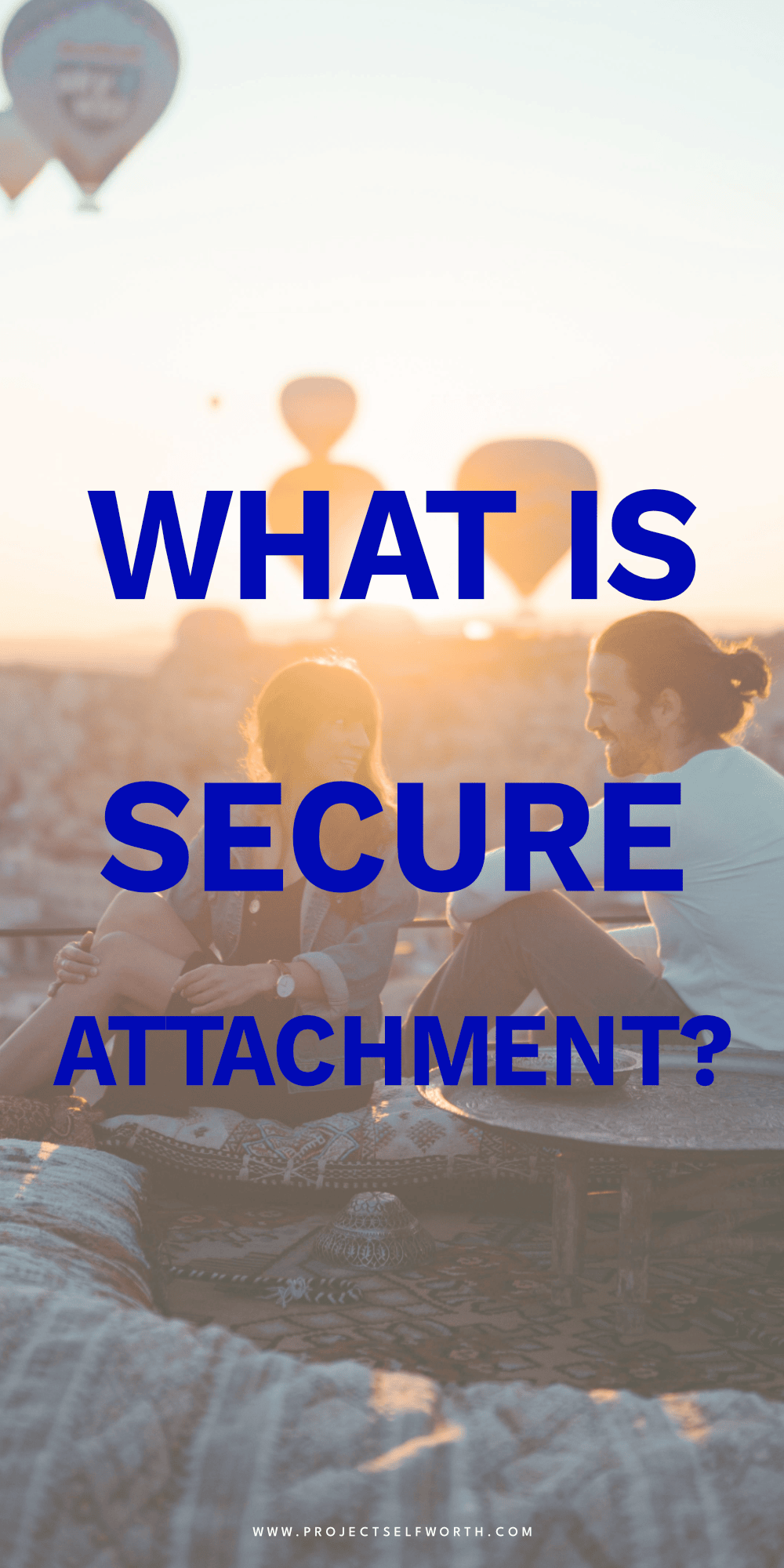How To Create Secure Attachment
Wondering how to create secure attachment?
Perhaps, for the most part, you’ve got your life handled. Crushing it in your career, slaying goals left and right.
But in the whirlwind of success, sometimes our personal lives can feel a little lacking. Maybe you’re constantly getting ghosted or chasing after the same toxic f*ck boys. Maybe you obsess over everyone you meet romantically, only to get disappointed later on. Or maybe dating in general feels like a chore, or close friendships seem fraught with drama.
The secret culprit that’s sabotaging your relationships? It could be your attachment style.
What Is Attachment Style?
Attachment style refers to the way you form close emotional bonds with others, particularly romantic partners. Secure attachment translates into healthy adult relationships. People with secure attachment feel comfortable relying on others for support, and are confident in their own lovability.
Your attachment style is rooted in your early childhood experiences with your primary caregivers. But the good news is it’s not set in stone. You can work on creating secure attachment, no matter what your current dating life is like or what your childhood was like.
The 4 Types Of Attachment Styles
Understanding your attachment style can be a powerful tool for self-discovery. It can help you identify patterns in your relationships and areas for growth.
To understand a bit more about what secure attachment is, let’s also understand the other attachment styles.
1. Secure Attachment
This is the ideal attachment style. And yes–you can work on creating this, even if you don’t have it right now!
People with secure attachment are confident in their own lovability (or self-worth). They can express their desires and needs and don’t feel the like they have to people-please. They also feel comfortable with intimacy and getting closer to people doesn’t scare them. Similarly, while they like being around other people, they also don’t get anxious if they’re not.
People with secure attachment typically had parents who were emotionally supportive during their childhood. Their parents were good at managing their own emotions as well as meeting the needs of their child.
2. Anxious Attachment
Individuals with this style often crave intimacy but struggle with trust and independence. They might worry excessively about abandonment and be clingy or needy in relationships. All of this is rooted in the fact that they are anxious and have low self-esteem. While they desperately want to be close with others, they are afraid that people don’t want to be with them.
(This style can include people-pleasers, codependents, and empaths.)
As a child, their parents were likely inconsistent. While they might have responded at times, sometimes they were busy, preoccupied, or distracted. Their anxiety stems from the fact that they could never predict what kind of support they would receive.
3. Avoidant Attachment
People with avoidant attachments are the opposite of needy. Instead of wanting to be emotionally close, they avoid connecting with others. They often develop hyper-independence as a coping strategy: they only rely on themselves, crave freedom, and find emotions in general to be difficult.
Avoidant attachments also had parents who were unavailable emotionally during their childhood. Perhaps they rejected them or refused to meet theirr needs. Perhaps they were just unavailable emotionally.
Ultimately, these children learned how to withdraw and self-soothe. They learned to avoid closeness at a young age or maybe never knew what it felt like and now avoid it all together.
4. Disorganized/Fearful-Avoidant
The final attachment style is disorganized attachment: a deep feeling that they don’t deserve love. However, they still crave love but they fear it at the same time.
This pattern typically stems from intense fear which may be rooted in childhood trauma, abuse, or neglect. However, just inconsistent or chaotic caregiving experiences can also create this dynamic.
How To Create Secure Attachment Style
So what happens if you aren’t lucky enough to already have a secure attachment foundation?
Not to worry! The good news is, attachment styles can change over time. Here are some tips on how how to cultivate secure attachment and build rock-solid relationships as an adult:
(Note: most of these tips are aimed at anxious attachment styles.)
Tip #1: Challenge Negative Self-Beliefs
Do you constantly worry your partner will leave? Believe intimacy means losing independence? Understand that often these thoughts are stem from insecurity, not reality. Challenge them with positive affirmations.
Tip #2: Keep Your Energy Back
Many anxious attachments are natural people-pleasers. But this often leads to overperforming in relationships or chasing after people. Learn how to stay detached, even if you think you really like someone. There’s no need to go into pleaser mode for them to like you–and if that’s what they do want from you, it’s probably a toxic situation anyway.
Tip #3: Start Communicating More
When you believe that speaking your needs or wants will get you into trouble somehow, you need to start overcoming this in baby steps. Start speaking up about low or no-stakes options. Tell someone which restaurant your prefer or which movie you want to watch. (That doesn’t mean you have to argue to get your way every time! Just start telling people what you want.)
Assuming you do this with supportive people, over time, this will “prove” to your brain that you it is safe to express your desires and needs.
Tip #4: Seek Out Healthy Connections
On that note, be sure to fill your life with people who respect and support you. If you have an anxious attachment style, I’m willing to bet a few not-so-supportive people have slipped into your orbit over the years and are currently taking up too much of your time or energy.
You don’t have to cut everyone out of course, but you should focus more on the people who nurture you. Look out for the emotionally available ones and for friendships based on mutual respect.
Tip #5: Share Your Journey
It can be very useful to tell the people close to you about your healing journey. Be open and honest about your needs and desires. Practice active listening, showing genuine interest in your partner’s perspective.
However, be careful not to force others to be your therapist or to use your self-knowledge as an excuse for your behavior.
Tip #6: Reassess Your Boundaries and Standards
From my perspective. a lot of anxious attachment comes from having a porous sense of self. We start to overvalue what other people think and put little emphasis on ourselves.
One way to help combat this is by working on your own boundaries and standards. What’s an area where you need some boundaries to protect your peace? Don’t be afraid to change the way you move through life, especially if the old was actually hurting you.
Tip #7: Prioritize You
Self-care isn’t selfish or trendy; it’s essential to your overall confidence and mental health. Prioritize activities that bring you joy and reduce stress. You’re allowed to fill your week with more of these even if that means less coffee dates (or actual dates).
Again, this can be difficult if you were never prioritized as a child. But what better way to “prove” to yourself that you are worthy of excellent care than by giving it to yourself?
Ultimately, this has a positive spill over effect. The more secure you feel within yourself, the better equipped you are for secure relationships.
Tip #8: Look For Secure Attachments To Date
If you’re an anxious attachment style who’s actively dating, I just know that you’ve attracted more than your fair share of avoidant attachments who leave you feeling worthless or confused.
However, part of understanding attachment style is learning how to see secure attachments. Can they communicate easily? Does intimacy scare them? What’s their relationship history like? Of course we cannot fully vet anyone without knowing them well. But over time you will see more of the red flags sooner and hopefully avoid yet another emotional heartbreak.
So what did you think? Did you learn something useful today about your attachment style? Which tip are you going to focus on to create more secure attachment?
How To Create Secure Attachment Final Thoughts
Remember, creating secure attachment is a journey, not a destination. Be patient with yourself, celebrate your progress, and don’t be afraid to seek professional help if needed. By investing in secure attachment, you’re investing in a lifetime of fulfilling, happy relationships.
Building secure attachment empowers you to create the loving, supportive relationships you deserve. Go forth and conquer, both in your career and your personal life!

Love This Post? Then Save It To Pinterest!



